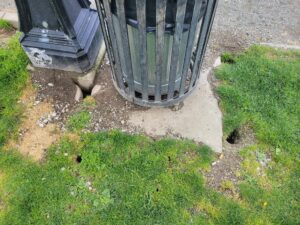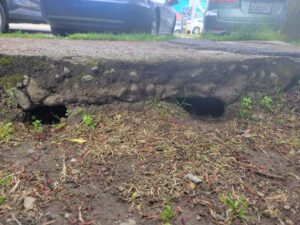City of Seattle: Rodent Management That is Discreet and Effective

With more than 400 parks under their management and a rising rodent population, the City of Seattle and the Seattle Park District needed an approach to rodent management that was discreet, effective and founded in integrated pest management principles.
They found a solution from Sprague Pest Solutions that uses targeted CO2 burrow injection treatments to deliver a rodent mitigation program that benefits residents and park users but leaves no environmental footprint behind.
How CO2 Works
The CO2 method – which has been used successfully in urban rodent hot spots including New York, Boston, Washington DC, Philadelphia and Chicago – delivers a lethal treatment directly to underground rodent burrows.

The CO2 technique is particularly effective in urban settings, where Norway rats build nests underground in public parks and other open spaces.
The technique is particularly effective in urban settings, where Norway rats build nests underground in public parks and other open spaces. Rather than deploy traditional rodent baiting methods that rely on rats consuming the bait – a challenge in food-rich environments like parks – CO2 is delivered through an injection machine.
This targeted method not only reduces rodent populations but does so leaving zero residual product behind.
The CO2 method is just one spoke in the rodent management wheel. It is not a silver bullet that will permanently solve a rodent problem on its own. Commercial property owners and managers, and municipalities must maintain good sanitation, exclusion, monitoring and landscape maintenance protocols to prevent rodent populations from reaching a tipping point.
Putting Theory Into Practice
Sprague and the City of Seattle took the fight directly to rodents that were overrunning Cal Anderson Park in the city’s Capitol Hill district. The seven-acre park features a fountain, reflecting pool, promenade paths, shelter house, children’s play area, and sports fields.
The park is the hub of the Capitol Hill community and neighborhood residents enjoy walking, sitting, reading, exercising, and informal and organized sports. One thing the residents don’t enjoy is the rising Norway rat population and they voiced their complaints to the city.

Sprague and the City of Seattle took the fight directly to rodents that were overrunning Cal Anderson Park in the city’s Capitol Hill district.
Previous efforts by the park district using a traditional rodent baiting program proved less than effective in controlling the growing rat population.
“The competing food sources from the garbage left behind by visitors and a homeless population that has grown in recent years (the rats had burrowed underneath their encampment) provided all the food they needed,’ said Nate Cechman, Seattle branch manager who worked on the project.
Using U.S. EPA registered injection technology, the CO2 is applied after all primary exterior burrow and bolt (escape routes) holes – nearly 200 total in the park – were sealed by Sprague’s two-person team. The injection rod is in inserted into the burrow to deliver a lethal dose of CO2.
“CO2 is a significantly faster and more effective way to eliminate burrowing rodents in park and open space settings,” said Ashley Roden, B.C.E., technical manager for Sprague who helped conduct the treatment. “It reduces our rodenticide bait usage, leaves no residual and delivers a targeted treatment with reduced risk to humans and non-target animals.”
Roden said CO2 is heavier than air and thus sinks directly into the rodent’s subterranean burrows. The applications at Cal Anderson were made during daylight hours when rodents are “home” and asleep.
A typical treatment program includes two applications to ensure that rodents who were not inside the burrow at the time or escaped are targeted.
To date, Sprague has performed CO2 treatments at eight Seattle parks that contained more than 750 burrow openings.
The Benefits of CO2
Rodents are one of the world’s biggest threats to public health. They spread a variety of diseases including Salmonella and E. coli, can contaminate food and cause structural damage to buildings. Their presence is a clear and present danger that cannot be ignored.
Developing an effective IPM rodent management program requires “stacking the effects.” Using CO2 treatments in addition to non-toxic bait monitoring, trapping, exclusion and sanitation, offers municipalities and other commercial clients the following benefits:
- Approved for use in organic food processing facilities.
- Can be used on the exterior of food processing and distribution facilities, and other sensitive facilities where traditional rodenticides are not allowed.
- Effective in outdoor green/right-of-way spaces including school districts, corporate business parks, HOA, highway right of ways, railroad sidings, etc.
- The service is discreet; there is no removal of dead rodents from bait stations or traps.
- A low-impact IPM based option for quick knockdown of high-density rodent populations.
- A more cost-effective option over the long term vs. traditional rodent control methods for municipalities and other commercial clients.
- Reduced reliance and usage of rodenticide baits.
For more information on Sprague Pest Solutions’ CO2 rodent management programs, visit our website or call 800.272.4988.
